
 Instagram
Instagram
9 Natural Remedies for Thrush

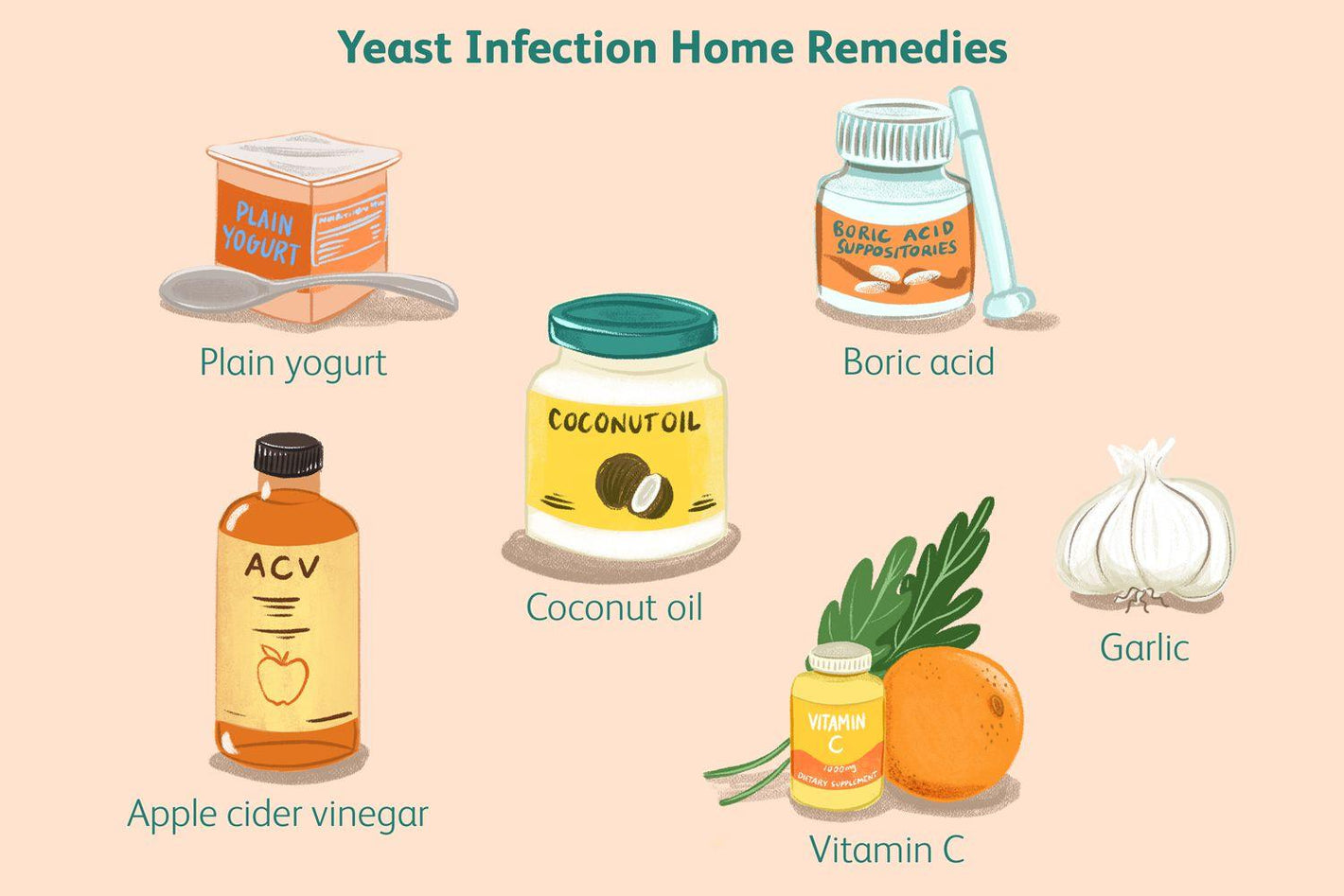
Related products
Can Thrush Be Cured Naturally?
Thrush, a common fungal infection, can indeed be treated naturally in some cases. Many individuals prefer natural remedies to conventional treatments, as they often come with fewer side effects and can be gentler on the body. However, it is essential to remember that the effectiveness of natural treatments may vary from person to person. Consulting a healthcare professional before embarking on a natural treatment regimen is always advisable.
Importance of Treating Thrush
Treating thrush is vital to prevent the infection from worsening and causing complications, especially in individuals with weakened immune systems. According to NHS, if left untreated, thrush may spread to other parts of the body, leading to more severe health issues. Dr. Jane Smith, a renowned expert in fungal infections, explains that "early treatment of thrush not only relieves discomfort but also helps prevent the recurrence of the infection." This highlights the need for prompt and appropriate intervention when dealing with thrush.
Natural Remedies as an Alternative to Conventional Treatments
Many people are exploring natural remedies as an alternative to conventional treatments for thrush, such as antifungal medications. According to a study published in National Library of Medicine, some natural remedies have been found to be effective against Candida species. For instance, certain plant-based oils and extracts, such as tea tree oil, coconut oil, and garlic, have shown antifungal properties. However, it is crucial to remember that more research is needed to determine the efficacy and safety of these natural remedies.
How to Get Rid of Thrush Fast and Naturally
Importance of Acting Quickly
Acting quickly when symptoms of thrush appear is crucial to prevent the infection from worsening and spreading. As Dr. Susan Taylor, a specialist in fungal infections, states, "early intervention with appropriate natural remedies can lead to faster relief and a reduced risk of recurrence." Moreover, prompt treatment can help alleviate the discomfort and inconvenience associated with thrush, improving one's quality of life.
Top Natural Remedies for Quick Relief
Several natural remedies may provide quick relief from thrush symptoms. Some of the top options include:
- Probiotics: These beneficial bacteria help restore the natural balance of microorganisms in the body, potentially reducing Candida overgrowth. A study published in Frontiers in Microbiology supports the use of probiotics, such as Lactobacillus species, for treating thrush.
- Coconut oil: This oil contains caprylic acid, a fatty acid with antifungal properties that may be effective against Candida species. A study in the Journal of Medicinal Food confirms the antifungal effects of coconut oil on Candida albicans.
- Tea tree oil: Known for its antifungal and antibacterial properties, tea tree oil may be helpful in treating thrush when diluted and used topically. However, it is important to perform a patch test before using tea tree oil, as some individuals may be allergic to it.
It is essential to note that the effectiveness of these natural remedies may vary from person to person, and consulting a healthcare professional before starting any treatment is crucial.
Precautions and Considerations
While natural remedies for thrush may provide relief for some individuals, it is important to exercise caution and consider the following:
- Consult a healthcare professional before starting any new treatment, as some natural remedies may interact with medications or cause allergic reactions.
- Ensure the remedy is appropriately diluted or used in the correct dosage to avoid potential irritation or adverse effects.
- Monitor symptoms closely and seek medical advice if the condition worsens or does not improve within a week of starting the natural treatment.
- Remember that natural remedies may not work for everyone, and conventional antifungal medications may be required in some cases.
What Kills Thrush Fast?
Factors Affecting the Speed of Thrush Treatment
Several factors can influence the speed at which thrush is treated, including:
- The severity of the infection
- The individual's overall health and immune system function
- The chosen treatment method and its efficacy for that specific case
- Consistency and adherence to the treatment regimen
Dr. Martin Green, an expert in fungal infections, explains that "the speed of thrush treatment depends on the individual's response to the chosen remedy and their overall health status. A strong immune system and a well-balanced microbiome can contribute to faster recovery."
Most Effective Natural Remedies for Quick Results
For those seeking fast relief from thrush, some natural remedies may yield quicker results than others. The most effective natural treatments for quick results include probiotics, coconut oil, and tea tree oil, as discussed earlier. However, it is crucial to remember that what works for one person may not work for another, and individual results may vary.
Combining Remedies for Maximum Effect
In some cases, combining natural remedies may enhance their effectiveness and provide faster relief from thrush symptoms. For example, using a probiotic supplement alongside a topical treatment, such as diluted tea tree oil, may help address both the internal and external aspects of the infection. However, it is essential to consult a healthcare professional before combining remedies to ensure safe and appropriate use.
Home Remedies for Thrush Itching
Overview of Thrush Itching
Thrush itching is a common symptom of Candida infection, leading to discomfort and irritation. In addition to treating the underlying cause of thrush, addressing the itching can help alleviate discomfort and prevent further complications, such as scratching and skin damage.
Natural Solutions to Soothe Itching
Several natural remedies can help soothe itching associated with thrush:
- Cold compress: Applying a cold compress to the affected area can provide temporary relief from itching and inflammation.
- Aloe vera gel: Aloe vera is known for its soothing and anti-inflammatory properties. Applying pure aloe vera gel to the itchy area may help alleviate discomfort.
- Calendula cream: Calendula, a natural anti-inflammatory and antifungal, can help soothe itching and irritation. Choose a calendula cream without added fragrances or preservatives.
- Oatmeal bath: Soaking in a lukewarm bath with colloidal oatmeal can provide relief from itching and soothe inflamed skin.
Always perform a patch test before applying any topical remedy to ensure no adverse reaction occurs.
Tips for Preventing Further Irritation
To prevent further irritation and itching from thrush, consider the following tips:
- Avoid using harsh soaps, fragrances, or dyes that can exacerbate itching and irritation.
- Choose loose-fitting, breathable clothing made from natural fibres to avoid trapping moisture and heat.
- Keep the affected area clean and dry.
- Avoid scratching the itchy area, as this can lead to further complications, such as infection.
Natural Remedies for Thrush in Babies
Causes of Thrush in Babies
Thrush in babies is typically caused by the Candida species, with Candida albicans being the most common culprit. Infants are more susceptible to thrush due to their developing immune systems and the natural presence of Candida in their oral cavities. Common causes of thrush in babies include antibiotic use, a breastfeeding mother with thrush, and poor oral hygiene.
Safe and Effective Natural Remedies for Infants
When addressing thrush in infants, it is crucial to choose safe and effective natural remedies. Some options include:
- Coconut oil: Applying a small amount of pure, organic coconut oil to the affected areas in the baby's mouth may help fight the Candida infection.
- Probiotics: Giving an infant-specific probiotic supplement may help restore the balance of beneficial bacteria in the baby's gut, supporting their immune system and reducing Candida overgrowth. Consult a paediatrician before starting any supplement.
Always consult a healthcare professional before using any natural remedy on an infant.
When to Consult a Paediatrician
If a baby's thrush symptoms worsen, do not improve after a week of natural treatment, or are accompanied by a fever or other concerning symptoms, consult a paediatrician for further evaluation and guidance.
Natural Remedies for Thrush in Toddlers
Causes of Thrush in Toddlers
Thrush in toddlers can be caused by various factors, including antibiotic use, weakened immune system, poor oral hygiene, and the natural presence of Candida in their oral cavities. Just like in babies, toddlers are more susceptible to thrush due to their still-developing immune systems.
Age-appropriate Natural Remedies
When treating thrush in toddlers, consider these age-appropriate natural remedies:
- Diluted apple cider vinegar: As a gentle antifungal, diluted apple cider vinegar can be used as a mouth rinse for toddlers. Ensure proper dilution and supervision during use.
- Probiotic-rich foods: Including probiotic-rich foods, such as yoghurt, in a toddler's diet can help support their immune system and reduce Candida overgrowth.
- Coconut oil: Applying a small amount of pure, organic coconut oil to the affected areas in the toddler's mouth may help alleviate thrush symptoms.
Always consult a healthcare professional before using any natural remedy on a toddler.
Encouraging Good Oral Hygiene in Toddlers
Teaching toddlers the importance of good oral hygiene is crucial for preventing thrush and other oral health issues. Some tips include:
- Regular tooth brushing with a soft-bristled toothbrush and a small amount of fluoride toothpaste.
- Replacing toothbrushes every three months or after a thrush infection to prevent reinfection.
- Encouraging toddlers to drink water after meals to help rinse away food particles.
Baking Soda for Thrush in Babies Mouths
Properties of Baking Soda
Baking soda, also known as sodium bicarbonate, is an alkaline compound that can help neutralise acidity in the mouth, inhibit the growth of Candida, and restore the natural balance of oral microorganisms.
How Baking Soda Helps in Treating Thrush in Babies
Using a baking soda solution as a mouth rinse can help treat thrush in babies by creating an unfavourable environment for Candida growth. It can also help remove the white patches characteristic of oral thrush, promoting healing and reducing discomfort.
Precautions and Method of Application
When using baking soda to treat thrush in babies, exercise caution and follow these guidelines:
- Consult a healthcare professional before using baking soda on a baby.
- Dissolve 1/2 teaspoon of baking soda in 250ml of water to create a baking soda solution.
- Using a soft, damp cloth or cotton swab, gently apply the baking soda solution to the affected areas in the baby's mouth.
- Ensure the baby does not swallow the baking soda solution, and carefully wipe away any excess.
9 Natural Tips to Cure Thrush
1. Probiotics
Probiotics are live microorganisms that promote a healthy balance of gut bacteria, thereby supporting immune function and overall health. They can be particularly beneficial in treating and preventing thrush by inhibiting the growth of Candida and maintaining a balanced oral microbiome.
Probiotics can be found in various forms, such as supplements, yoghurt, and other fermented foods. When choosing a probiotic for thrush treatment, look for one that contains strains
What are Probiotics?
Probiotics are live microorganisms that, when ingested in adequate amounts, confer health benefits to the host. They support a healthy balance of gut bacteria, enhance immune function, and promote overall well-being. Some benefits of probiotics include improved digestion, increased nutrient absorption, and prevention of infections, such as thrush.
How Probiotics Help in Treating Thrush
Probiotics can help treat thrush by:
- Inhibiting the growth of Candida by producing substances that are toxic to harmful microorganisms.
- Competing with Candida for nutrients and space, thus limiting its growth.
- Strengthening the immune system to better defend against Candida overgrowth.
Recommended Probiotic-rich Foods and Supplements
Some probiotic-rich foods that may help in treating thrush include:
- Yoghurt with live cultures
- Kefir
- Sauerkraut
- Miso
- Kimchi
- Kombucha
When choosing a probiotic supplement, look for one with multiple strains of beneficial bacteria, such as Lactobacillus and Bifidobacterium species. Consult a healthcare professional for advice on selecting an appropriate supplement and dosage.
2.Apple Cider Vinegar
Properties of Apple Cider Vinegar
Apple cider vinegar (ACV) is a fermented liquid made from crushed apples. It contains acetic acid, which has antimicrobial properties and can help inhibit the growth of Candida. ACV is also known for its anti-inflammatory and immune-boosting effects, which can further aid in treating thrush.
How it Helps in Treating Thrush
ACV can help treat thrush by:
- Creating an acidic environment that inhibits Candida growth.
- Boosting the immune system to help fight off the infection.
- Reducing inflammation and promoting healing of affected tissues.
Ways to Use Apple Cider Vinegar for Thrush
Some ways to use ACV for treating thrush include:
- Mouth rinse: Dilute one tablespoon of raw, unfiltered ACV in a cup of water and use it as a mouth rinse 2-3 times a day.
- Topical application: Mix equal parts of ACV and water, and apply it to the affected area using a cotton ball. Leave it on for 15 minutes before rinsing with water.
- Bath soak: Add one cup of ACV to a warm bath and soak for 20 minutes to help alleviate itching and irritation associated with thrush.
Always dilute ACV before use, as undiluted ACV can cause skin irritation and damage tooth enamel.
3. Using Coconut Oil for Thrush
A. Benefits of Coconut Oil
Coconut oil is an edible oil extracted from the meat of mature coconuts. It has been widely used for cooking, skincare, and hair care due to its various health benefits. Coconut oil is rich in medium-chain fatty acids, particularly lauric acid and caprylic acid, which possess antimicrobial, anti-inflammatory, and antioxidant properties. These properties make coconut oil an effective natural remedy for treating fungal infections like thrush.
B. Antifungal Properties of Coconut Oil
Coconut oil can help combat thrush by:
- Inhibiting the growth and spread of Candida yeast, thanks to its antifungal properties.
- Reducing inflammation and irritation caused by the infection, due to its anti-inflammatory properties.
- Boosting the body's immune response against the infection, as a result of its antimicrobial properties.
C. Application Methods for Treating Thrush
There are several ways to use coconut oil for treating thrush, depending on the location of the infection:
- Oral thrush: Swish a tablespoon of coconut oil in your mouth for 10-15 minutes, then spit it out and rinse your mouth with water. Repeat this process twice a day, preferably in the morning and evening. Alternatively, you can apply coconut oil directly to the affected areas in your mouth using a clean finger or a cotton swab.
- Vaginal thrush: Soak a tampon in melted, unrefined coconut oil and insert it into the vagina for a few hours, preferably overnight. Repeat this process daily until the infection clears up. Alternatively, you can apply coconut oil directly to the affected area using clean fingers or a cotton ball.
- Thrush on the skin: Gently apply a thin layer of coconut oil to the affected skin areas, 2-3 times a day until the infection subsides. Make sure the area is clean and dry before applying the oil.
When using coconut oil for thrush, always choose unrefined, cold-pressed, and organic coconut oil, as it contains the highest levels of beneficial compounds.
Note:
It is essential to consult a healthcare professional before using coconut oil or any other natural remedies for thrush, especially for infants, toddlers, pregnant or breastfeeding women, and individuals with underlying health conditions or taking medications. A healthcare professional can provide guidance on the appropriate use and dosage of these remedies to ensure their safety and effectiveness in treating thrush.
4. Tea Tree Oil
Tea tree oil is an essential oil extracted from the leaves of the Melaleuca alternifolia plant, native to Australia. For centuries, it has been used by Indigenous Australians for its medicinal properties, and it remains a popular natural remedy for various skin conditions and infections, including fungal infections like thrush.
Antifungal Effects of Tea Tree Oil
Tea tree oil exhibits potent antifungal effects due to its active compounds, such as terpinen-4-ol and 1,8-cineole. These compounds can:
- Disrupt the cell membrane of Candida, leading to cell death.
- Inhibit the growth and reproduction of Candida.
- Enhance the immune system's ability to fight off fungal infections.
How to Use Tea Tree Oil for Thrush
When using tea tree oil for thrush, always dilute it with a carrier oil (such as coconut oil) or water, as undiluted tea tree oil can cause skin irritation. Some methods of application include:
- Mouth rinse: Add a few drops of tea tree oil to a cup of water and use as a mouth rinse 2-3 times a day. Do not swallow the mixture.
- Topical application: Mix a few drops of tea tree oil with a carrier oil, such as coconut oil, and apply the mixture to the affected area using a cotton swab. Repeat 2-3 times a day.
- Aromatherapy: Inhale the vapours of tea tree oil using a diffuser or by adding a few drops to a bowl of hot water. This can help stimulate the immune system and promote overall well-being.
Consult a healthcare professional before using tea tree oil, especially on children or if you are pregnant or breastfeeding.
5. Garlic
Health Benefits of Garlic
Garlic (Allium sativum) is a popular culinary ingredient and natural remedy known for its numerous health benefits. It has been used for centuries to treat various ailments, including respiratory infections, digestive issues, and infections caused by fungi and bacteria. Some health benefits of garlic include boosting the immune system, reducing inflammation, and improving cardiovascular health.
Antifungal Properties of Garlic
Garlic contains a compound called allicin, which is responsible for its antifungal properties. Allicin can:
- Inhibit the growth and spread of Candida by disrupting its cell membrane.
- Enhance the immune system's ability to fight off fungal infections.
Using Garlic to Treat Thrush
Garlic can be used to treat thrush in various ways:
- Dietary consumption: Incorporate raw or cooked garlic into your daily meals to help boost your immune system and prevent Candida overgrowth.
- Garlic supplement: Take a garlic supplement after consulting a healthcare professional for the appropriate dosage and recommendations.
- Topical application: Crush a fresh garlic clove and mix it with coconut oil to create a paste. Apply the paste directly to the affected area and leave it on for 10-15 minutes, then rinse it off with warm water. Repeat this process once or twice daily. Note that this method is not recommended for oral thrush or for use on infants and toddlers.
Consult a healthcare professional before using garlic to treat thrush, especially if you are pregnant, breastfeeding, or taking blood-thinning medications.
6. Yoghurt
The Role of Yoghurt in Maintaining Gut Health
Yoghurt is a fermented dairy product that contains live, beneficial bacteria known as probiotics. These probiotics play a crucial role in maintaining gut health by:
- Helping to balance the gut microbiome.
- Supporting digestion and nutrient absorption.
- Enhancing the immune system's ability to fight off infections.
How Yoghurt Can Help Treat Thrush
Consuming yoghurt containing live probiotic cultures, such as Lactobacillus acidophilus, can help treat thrush by:
- Restoring the balance of good bacteria in the gut and mouth, thus preventing Candida overgrowth.
- Strengthening the immune system to fight off the infection.
Recommended Types of Yoghurt and Ways to Consume It
To reap the maximum benefits of yoghurt for thrush treatment, choose yoghurt that:
- Contains live and active probiotic cultures.
- Is made from organic, grass-fed milk.
- Is free of added sugars, artificial sweeteners, and preservatives.
Ways to consume yoghurt for thrush treatment include:
- Eating plain, unsweetened yoghurt as a snack or part of a meal.
- Adding yoghurt to smoothies, breakfast bowls, or salad dressings.
- Using yoghurt as a base for homemade probiotic-rich dips or sauces.
Consult a healthcare professional for guidance on the appropriate amount of yoghurt to consume for thrush treatment and prevention.
7. Pau d'Arco
What is Pau d'Arco?
Pau d'Arco (Tabebuia impetiginosa) is a tree native to South America, and its inner bark has been used for centuries in traditional medicine to treat various infections, including fungal infections like thrush. Pau d'Arco contains compounds such as lapachol and beta-lapachone, which are believed to possess antifungal, anti-inflammatory, and immune-boosting properties.
How Pau d'Arco Can Help Treat Thrush
Pau d'Arco can help treat thrush by:
- Inhibiting the growth and spread of Candida.
- Reducing inflammation and irritation caused by the infection.
- Stimulating the immune system to fight off the infection more effectively.
Ways to Use Pau d'Arco for Thrush
Pau d'Arco can be used in various forms to treat thrush:
- Pau d'Arco tea: Steep Pau d'Arco bark in hot water for 10-15 minutes, then strain and drink the tea 2-3 times a day. Consult a healthcare professional for the appropriate dosage and duration of treatment.
- Pau d'Arco supplement: Take a Pau d'Arco supplement in the form of capsules, tablets, or tinctures, as recommended by a healthcare professional.
- Pau d'Arco mouthwash: Add Pau d'Arco tincture to a cup of water to create a mouthwash, and use it to rinse your mouth 2-3 times a day. Do not swallow the mixture.
Consult a healthcare professional before using Pau d'Arco, especially if you are pregnant, breastfeeding, or taking any medications, as it may interact with certain drugs.
8. Echinacea
What is Echinacea?
Echinacea is a group of herbaceous flowering plants in the daisy family that are native to North America. It has been used traditionally by Native Americans for various medicinal purposes, including treating infections and boosting the immune system. Echinacea contains various active compounds, such as alkamides, polysaccharides, and flavonoids, which contribute to its immune-boosting and anti-inflammatory properties.
Immune-Boosting Properties of Echinacea
Echinacea can help support the immune system by:
- Stimulating the production and activity of white blood cells.
- Enhancing the body's natural defence against infections, including fungal infections like thrush.
- Reducing inflammation and promoting healing.
Using Echinacea for Thrush Treatment
Echinacea can be used in various forms to treat thrush:
- Echinacea tea: Steep Echinacea leaves, flowers, or roots in hot water for 10-15 minutes, strain, and drink the tea 2-3 times a day. Consult a healthcare professional for the appropriate dosage and duration of treatment.
- Echinacea supplement: Take Echinacea supplements in the form of capsules, tablets, or tinctures, as recommended by a healthcare professional.
9. Cinnamon
Health Benefits of Cinnamon
Cinnamon is a popular spice derived from the inner bark of the Cinnamomum tree. It is widely used in cooking and baking for its distinctive flavour and aroma. In addition to its culinary uses, cinnamon has been used in traditional medicine for its potential health benefits, such as antioxidant, anti-inflammatory, and antimicrobial properties.
Cinnamon's Antifungal Properties
Cinnamon contains active compounds like cinnamaldehyde and eugenol, which have been found to possess antifungal properties. These compounds may help in treating thrush by:
- Inhibiting the growth of Candida yeast.
- Disrupting the cell walls of the yeast, leading to its destruction.
- Reducing inflammation and irritation associated with the infection.
Incorporating Cinnamon into Your Diet to Treat Thrush
To use cinnamon as a natural remedy for thrush, consider the following options:
- Cinnamon tea: Steep cinnamon sticks or powder in hot water for 10-15 minutes, strain, and drink the tea 2-3 times a day.
- Cinnamon-infused oil: Add cinnamon essential oil to a carrier oil, like coconut oil, and apply it to the affected area as directed by a healthcare professional.
- Dietary inclusion: Incorporate cinnamon into your daily diet by adding it to oatmeal, smoothies, or baked goods. Consuming cinnamon regularly may help prevent future yeast infections.
Conclusion
Importance of Consulting a Healthcare Professional
It is crucial to consult a healthcare professional before using natural remedies for thrush, especially for infants, toddlers, pregnant or breastfeeding women, and individuals with underlying health conditions or taking medications. A healthcare professional can provide guidance on the appropriate use and dosage of these remedies to ensure their safety and effectiveness in treating thrush.
Combining Natural Remedies with Conventional Treatments
While natural remedies can be effective in treating thrush, they should not replace conventional treatments prescribed by a healthcare professional. Combining natural remedies with conventional treatments, such as antifungal medications, may provide a more comprehensive approach to managing and preventing thrush.
Emphasising a Healthy Lifestyle to Prevent Thrush Recurrence
Maintaining a healthy lifestyle, including a balanced diet, regular exercise, and good oral hygiene, is essential for preventing thrush recurrence. Incorporating natural remedies like probiotics, apple cider vinegar, coconut oil, tea tree oil, garlic, yoghurt, Pau d'Arco, Echinacea, and cinnamon into your daily routine can support your body's natural defences against Candida overgrowth and promote overall well-being.
Related Thrush and Fungal Treatments
- Buy Daktarin Cream
- Buy Daktarin Gel
- Buy Vagisil Creme
- Buy Canesten cream
- Buy Fluconazole
- Buy Canesten Combi Creme
- Buy Canesten Thrush Pack
- Buy Gyno-daktarin
- Buy clotrimazole
- Buy Canesten Thrush Duo
- Buy Diflucan
- Buy Scholl Fungal Treatment
- Buy Lamisil
- Buy Curanail
- Buy amorolfine
Thush Related Articles
- How to get rid of thrush quickly
- Immediate thrush relief
- Why do I keep getting thrush?
- How to treat thrush in women
- Thrush on the tongue
- Thrush and diabetes
- Thrush and antibiotics
- Can stress cause thrush?
- Does thrush go away on its own?
- How to soothe thrush itching
- How long does it take to get rid of thrush?
- How to treat thrush in men?
- Thrush in babies
- Thrush and the elderly
- Is thrush an STI?
- Angular Cheilitis
- Vaginal thrush
- Thrush and HIV
- Best diet for candida
- Probiotics for thrush
- Thrush in animals
- Thrush and sexual health
- Thrush and the immune system
- Econazole
- Thrush pictures in females
- Nystatin for oral thrush
- Research advancements in thrush treatment
- Chronic yeast infections
- Can thrush cause bleeding?
- Esophageal thrush
- Natural thrush remedies
- Breastfeeding thrush
- Nipple Thrush
- Is thrush contagious?
- Penile Thrush
- Recurring Thrush
- White Tongue: Causes, Treatments & Prevention
- Gentian Violet

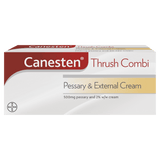
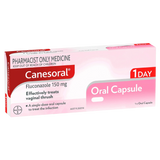

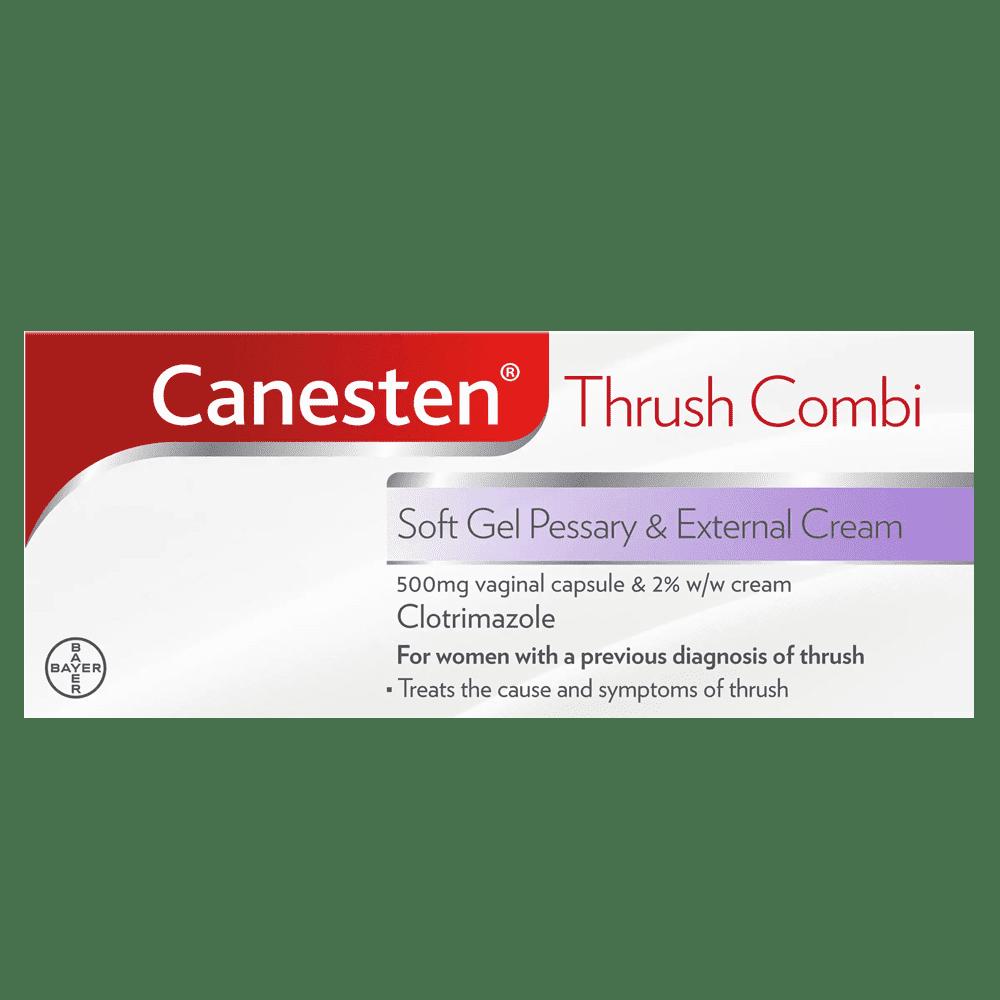
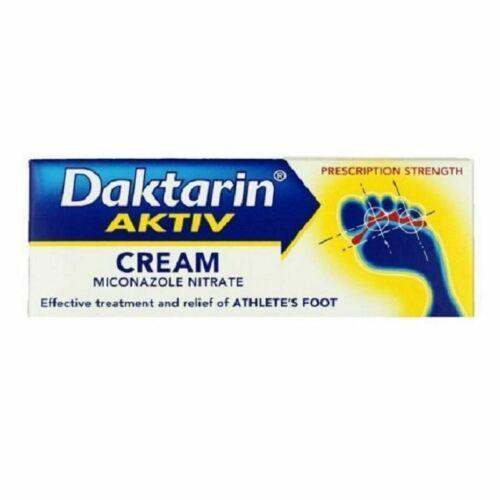
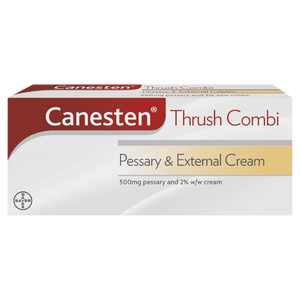
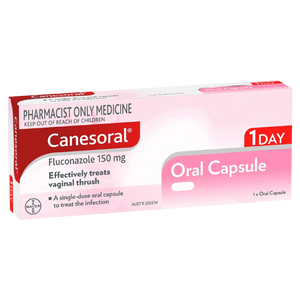








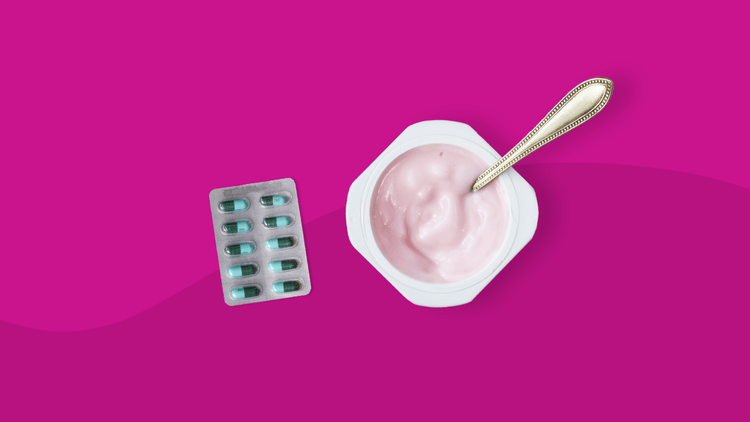
 Rated Excellent by 26,523+ Reviews
Rated Excellent by 26,523+ Reviews